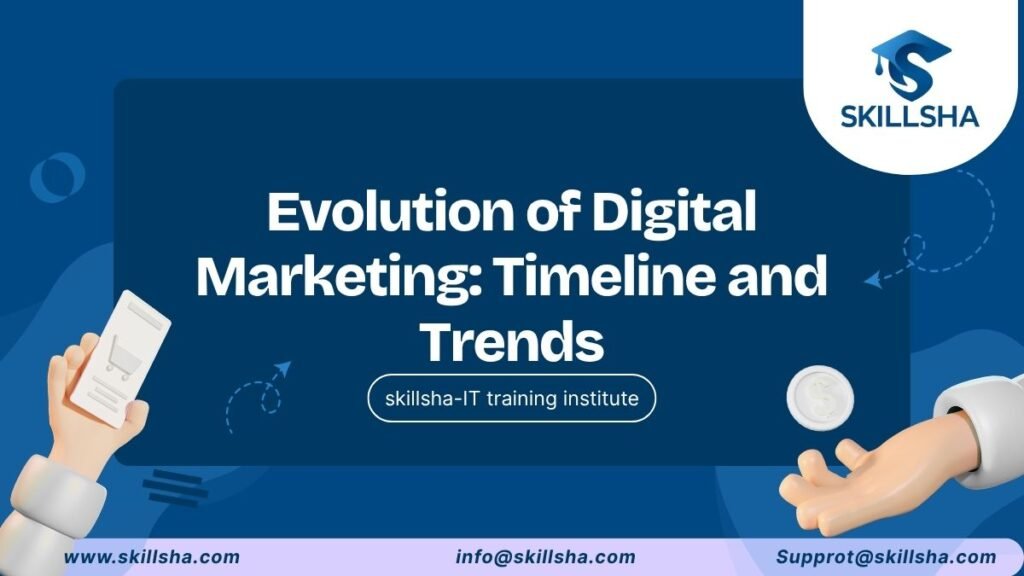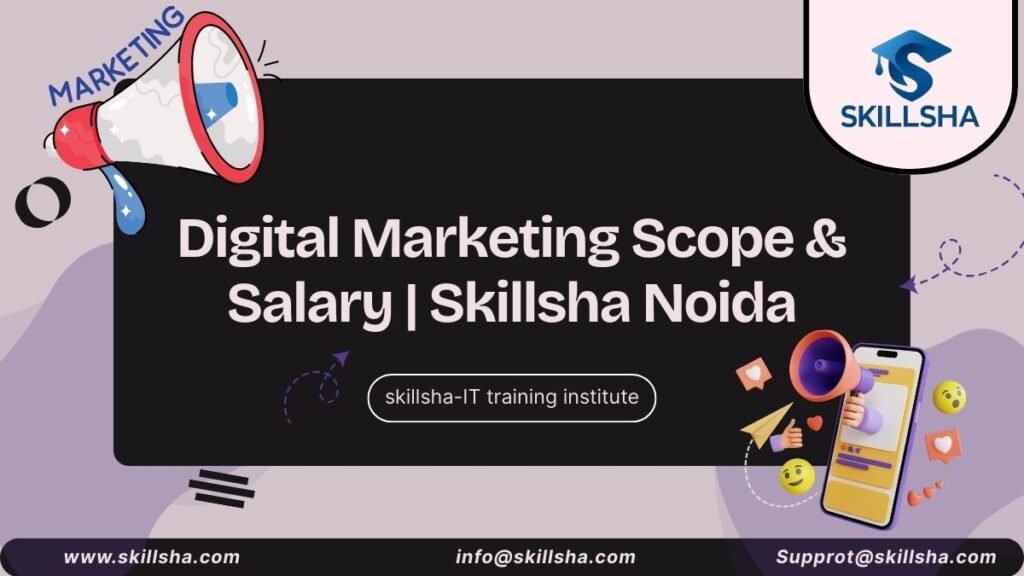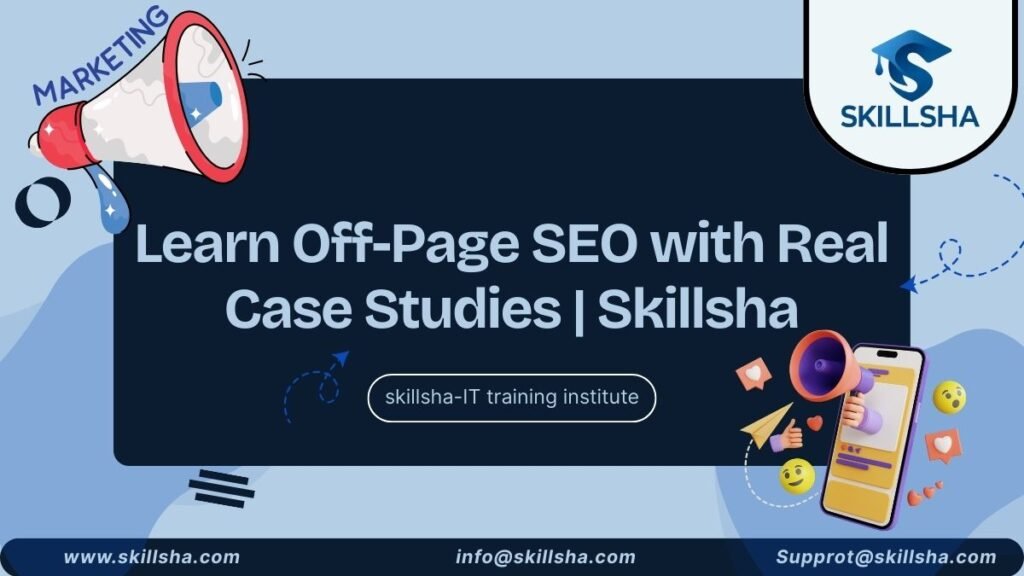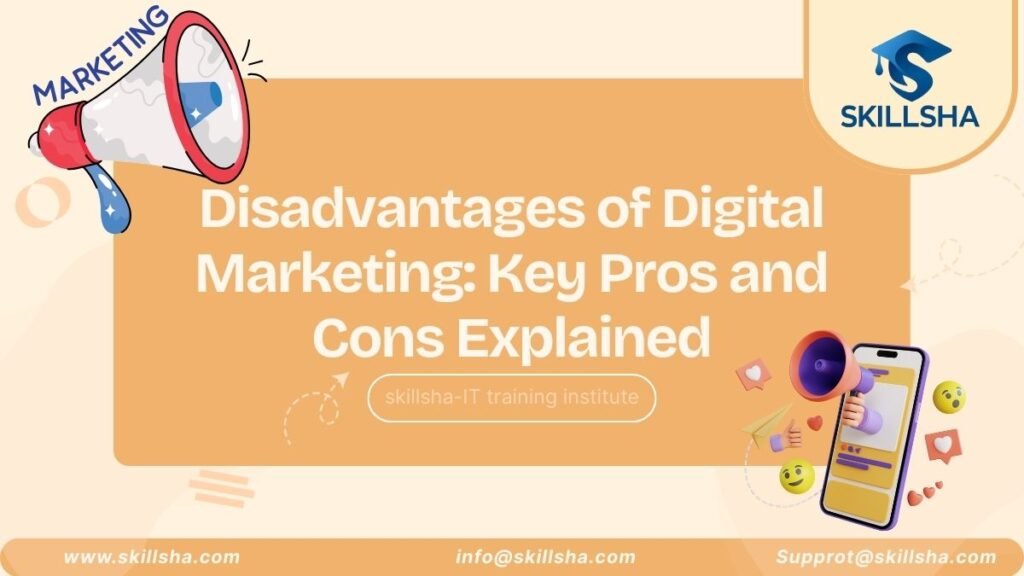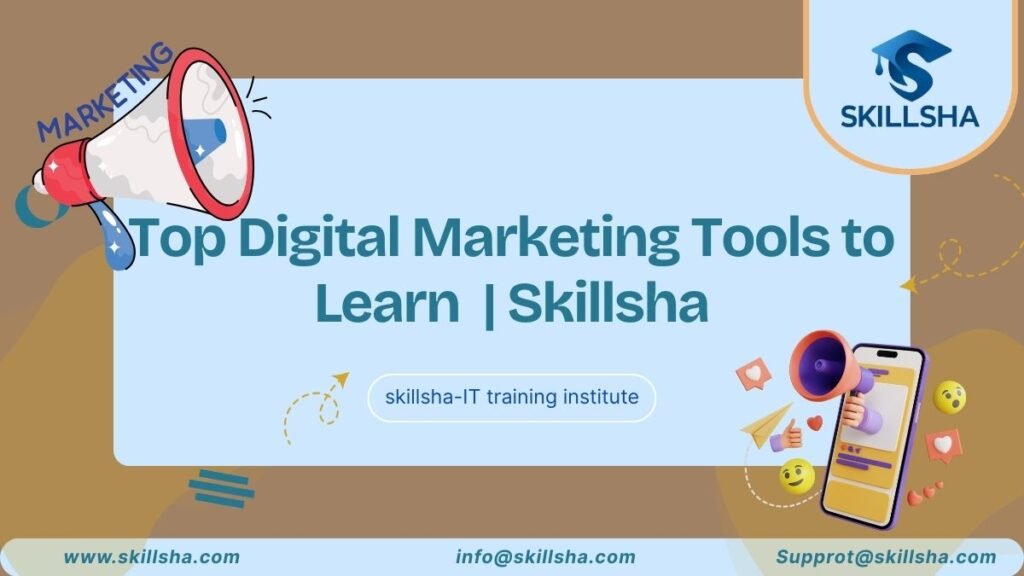Digital marketing has truly evolved over the years, what once began as simple, static banner ads on early websites has now grown into an incredibly dynamic ecosystem filled with AI-driven campaigns, personalized user experiences, and real-time engagement strategies. It’s not just about placing ads anymore; it’s about building connections, creating conversations, and offering value in the right place, at the right time, and to the right people.
If you’re currently enrolled in a Digital Marketing Course in Noida, chances are you’ve heard your instructors emphasize that “digital marketing is always changing.” And that’s not just a buzzword or something marketers like to say, it’s a fact. The digital space is in a constant state of evolution, influenced by emerging technologies, changing consumer behaviors, new platforms, and even global events like the pandemic.
Understanding how digital marketing has grown over time isn’t just helpful, it’s crucial. It gives you the context to appreciate the tools you’re learning, the confidence to adapt to change, and the foresight to anticipate trends before they become mainstream. In short, it’s not just about knowing what to do, it’s about understanding why things work the way they do, and how they came to be that way.
1990s: The Birth of Digital Marketing
The 1990s were truly a groundbreaking era, the internet had just arrived, and no one quite knew what to do with it yet. It was a time of experimentation, curiosity, and slow-loading web pages. But despite the limited technology and dial-up connections, this decade marked the very beginning of what we now call digital marketing.
Let’s rewind a bit:
- 1990: The world got its first search engine, Archie. It wasn’t glamorous, but it was revolutionary.
- 1993: The first-ever clickable banner ad went live on HotWired.com. It was simple and said, “Have you ever clicked your mouse right here? You will.” And guess what? People did.
- 1994: Yahoo! entered the scene, acting as a digital phone book where businesses could finally be found online.
- 1996: More search engines started popping up, AltaVista and Ask Jeeves became tools people actually used to find information.
- 1998: Then came Google, quietly at first, but it would soon completely change the way people discovered content and how brands marketed themselves.
What Was Digital Marketing Like Back Then?
- Websites were mostly static, no videos, animations, or fancy buttons.
- Banner ads were the go-to strategy (they were flashy, sometimes annoying, but they worked).
- Email marketing was just beginning, and everyone was excited about the idea of reaching people directly in their inbox.
Why This Era Mattered:
This decade set the foundation for everything we do in digital marketing today. Brands were starting to understand that the internet wasn’t just a tech novelty, it was a powerful space where they could connect with people beyond geographic boundaries. It was uncharted territory, and for the first time, the rules of marketing were being rewritten.
2000s: The Rise of Search and Social Media
The 2000s were a turning point in the evolution of digital marketing. The internet was no longer a novelty, it was quickly becoming a part of daily life. As more people got online, businesses started seeing the true potential of digital platforms, not just for visibility but for meaningful interaction and measurable growth.
This decade was defined by two major shifts: the rise of search engines as powerful advertising platforms, and the birth of social media, which transformed how brands engage with audiences.
Let’s look at some key milestones:
- 2000: Google launched AdWords, introducing the pay-per-click (PPC) advertising model. Suddenly, businesses could bid to appear in front of users actively searching for their products or services, paying only when someone clicked. It revolutionized how ads were bought and sold online.
- 2003–2006: This period saw the launch of LinkedIn (2003), Facebook (2004), YouTube (2005), and Twitter (2006). These platforms shifted the digital landscape from one-way communication to interactive, community-driven experiences.
- 2005: With the launch of Google Analytics, marketers finally had access to tools that offered insights into user behavior, traffic sources, and campaign performance, all in real time.
- 2007: The debut of the iPhone was more than just a tech milestone, it ushered in the age of mobile marketing. Websites now needed to be mobile-friendly, and brands had to rethink how they engaged users on smaller screens.
Key Developments of the Decade:
- SEO and SEM matured: No longer a guessing game, search engine optimization became a critical strategy for gaining visibility. At the same time, search engine marketing (SEM) grew as a paid alternative to reach targeted audiences.
- Email marketing got smarter: With better tools came better targeting. Marketers started using list segmentation and personalized content to improve engagement.
- Social platforms created brand-new opportunities: Businesses could now build communities, run campaigns, and interact directly with customers in ways never possible before.
Why This Era Mattered
The 2000s marked a significant shift in mindset. Brands started treating their online presence as a core part of their marketing strategy, not just an afterthought. Digital campaigns were no longer just about being seen, they were about being found, measured, and engaged with.
2010s: The Content and Personalization Era
By the time the 2010s rolled around, digital marketing was no longer an optional add-on, it had become central to almost every business strategy. With smartphones now in nearly everyone’s pocket and social media platforms growing at a rapid pace, how people consumed content and interacted with brands fundamentally changed.
This was the decade when “content became king”, and personalization went from being a nice extra to a non-negotiable. Consumers expected more than just ads, they wanted relevance, interaction, and real value from the brands they followed.
Let’s break down some of the defining moments:
- 2010: The launch of Instagram redefined how brands told stories online. It wasn’t just about text anymore, visual storytelling took center stage, from perfectly curated feeds to behind-the-scenes Stories.
- 2012–2015: Both Facebook and Twitter rolled out more advanced advertising platforms, allowing brands to target users with incredible precision based on interests, behaviors, and demographics.
- 2014: A major shift occurred as mobile usage officially surpassed desktop globally. Marketers now had to think “mobile-first”, ensuring content was responsive, quick to load, and easy to engage with on smaller screens.
- 2016: The rise of chatbots and automation tools began. Brands started using these to handle customer service, lead generation, and even product recommendations, streamlining communication while staying available 24/7.
- 2018: The introduction of the General Data Protection Regulation (GDPR) in Europe forced marketers to rethink how they collected and handled personal data, leading to a renewed focus on transparency and user consent.
What Was Trending
- Content marketing boomed: Blogs, how-to guides, explainer videos, and infographics became go-to formats for educating and engaging audiences.
- Influencer marketing gained serious traction: Social media influencers, especially on YouTube and Instagram, became powerful voices that brands could partner with to build authenticity and trust.
- Email and CRM automation tools surged: Platforms like Mailchimp, HubSpot, and Marketo helped businesses personalize communication at scale.
- Personalization became expected: From customized product recommendations to dynamic email content, users began to expect experiences tailored just for them.
Why This Era Mattered
The 2010s were about more than just being seen, they were about making a meaningful connection. Brands could no longer rely on flashy ads alone. Users wanted value: tutorials instead of pitches, recommendations instead of spam, and conversations instead of cold calls.
This decade taught marketers that trust, relevance, and experience were the true currencies of the digital world. It was the age when marketing shifted from being all about reach to being about resonance.
2020s: The AI-First, Privacy-Focused Era
Welcome to the present, where digital marketing is smarter, more personal, and more aware of user privacy than ever before. The 2020s have been nothing short of transformative, and the pace of change has been unlike anything the industry has seen before.
2020: It all began in 2020, when the COVID-19 pandemic forced people and businesses around the world to shift online almost overnight. From small shops to global brands, everyone had to adapt, and fast. This rapid digital shift accelerated trends that had been simmering for years.
2021: In 2021, Google announced a major change: the phase-out of third-party cookies. This signaled a turning point, marketers could no longer rely on passive data collection. Instead, they had to get smarter (and more ethical) about how they understood their audiences.
2022: By 2022, generative AI tools like ChatGPT, Jasper, and Midjourney started gaining real traction. Suddenly, marketers could generate blog posts, ad copy, social content, and even images with the help of AI, saving time, boosting creativity, and scaling content like never before.
2023-24: Fast forward to 2023–2024, and short-form video became king. Whether it was Instagram Reels, YouTube Shorts, or TikTok clips, bite-sized video content dominated feeds and became one of the most effective ways to engage users.
2025: Now in 2025 and beyond, we’re seeing another shift: voice search and zero-click results are on the rise. People are asking smart assistants like Alexa or Google Assistant for answers, and often getting what they need without clicking a single link.
What Defines Digital Marketing Today?
- AI-Generated Content & Predictive Marketing: From writing captions to suggesting products, AI helps personalize and optimize like never before.
- Ethical Data Practices: With the death of cookies, brands now focus on gathering first-party data, through email signups, loyalty programs, and direct customer interactions.
- Omnichannel Experiences: Whether it’s a website, app, email, or social media, brands are creating seamless journeys across platforms.
- Voice Optimization: Smart marketers are now optimizing content for how people speak, not just how they type.
FAQs
Q1. Is digital marketing still worth learning in 2025?
Absolutely. In fact, it’s more relevant than ever. With every business going digital, skilled marketers are in high demand.
Q2. What should I focus on in a digital marketing course?
SEO, SEM, content marketing, social media strategy, email marketing, and hands-on tools like Google Ads, Meta Ads, Canva, and ChatGPT.
Q3. Will AI take over digital marketing jobs?
Not entirely. AI will automate repetitive tasks, but human creativity, strategy, and emotional connection are irreplaceable.
Q4. How is SEO changing?
Voice search, zero-click searches, and content experience optimization are leading the next wave of SEO.
Q5. How do I break into digital marketing as a fresher?
Start by enrolling in a trusted Digital Marketing Course in Noida, build a portfolio (freelance, internships, or side projects), and stay active on LinkedIn and industry forums.
Final Thoughts
Digital marketing isn’t just another career path, it’s an exciting blend of creativity, technology, psychology, and strategy. What started as simple email blasts has now evolved into real-time, AI-powered, hyper-personalized user experiences. And guess what? It’s still evolving, faster than ever.
Whether you’re a student just starting out, a freelancer looking to expand your skills, or someone considering a career switch, understanding how digital marketing has grown over the years gives you a serious edge. It helps you not only keep up, but stay ahead. Because once you grasp the evolution, you start to see the trends before they even fully emerge.
And if you’re based in or around Noida, enrolling in a practical, hands-on Digital Marketing Course in Noida might just be the smartest step you can take. It’s not just about learning the tools, it’s about understanding the mindset, the strategy, and the creativity behind great marketing.

